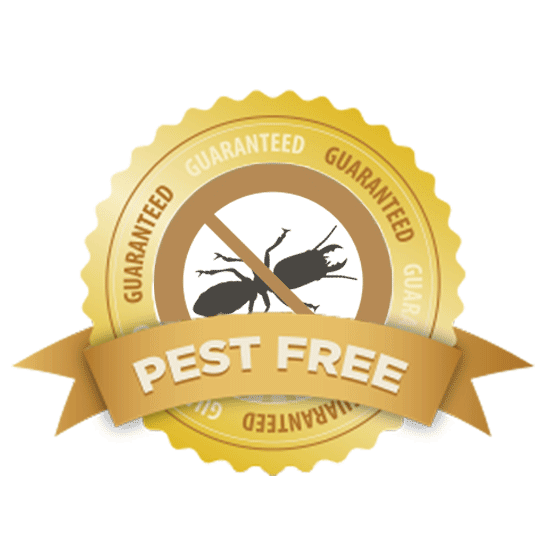Reliable Insect Control Providers: An In-Depth Appearance at Elimination Techniques and Avoidance Measures
In the world of pest control services, the successful management of infestations requires a precise strategy that integrates numerous methods and steps for both elimination and prevention. From Integrated Bug Management (IPM) strategies that prioritize sustainable services to chemical extermination techniques designed for targeted elimination, the toolbox against parasites is diverse and vast.

Integrated Insect Administration (IPM) Methods
Integrated Bug Administration (IPM) Techniques encompass a comprehensive strategy to pest control that concentrates on prevention, tracking, and control techniques to properly manage insect populaces. By incorporating numerous methods, IPM aims to reduce the effect of bugs while additionally lowering the dependence on chemical pesticides. Prevention exists at the core of IPM, emphasizing methods like appropriate cleanliness, maintenance of health, and securing entrance factors to discourage bugs from infesting structures.
Chemical Elimination Methods
Chemical elimination methods are frequently utilized in pest control services to efficiently eliminate insect populations that position a threat to human health and residential property. These techniques include the use of different chemical substances specifically developed to target and eliminate pests such as pests, rats, and various other unwanted creatures. The application of chemicals, insecticides, rodenticides, and other chemical agents is thoroughly regulated to ensure optimum efficiency while reducing dangers to people, animals, and the environment.
Among the crucial advantages of chemical elimination methods is their capability to offer quick and targeted outcomes, making them especially useful in instances of serious infestations or immediate pest control demands - a1 residential pest control portland or bed bugs. Nevertheless, it is necessary to stress the significance of correct handling, application, and disposal of these chemical products to avoid unplanned injury
Additionally, incorporated insect monitoring (IPM) techniques often combine chemical extermination methods with various other methods such as hygiene, habitat adjustment, and organic controls to create a sustainable and comprehensive parasite control method. By including chemical extermination methods carefully within an IPM framework, bug control solutions can successfully manage pest populations while lessening possible risks to human health and wellness and the setting.
Biological Bug Control Approaches
Employing natural predators and parasites to handle parasite populations is a sustainable technique understood as organic parasite control. This approach utilizes the natural systems of the community to manage parasite populaces without relying on synthetic chemicals. One common biological control method involves presenting all-natural adversaries of the target pest species, such as ladybugs for aphid control or nematodes for termite infestations. These natural predators feed on the pests, aiding to maintain their populaces in check.
One more effective organic control approach is the usage of microbial insecticides. These are naturally taking place bacteria, such as infections, germs, and fungi, that particularly target and infect specific insect varieties. By utilizing these microbial representatives, pest populaces can be properly minimized without triggering or harming helpful organisms injury to the atmosphere.
Physical Pest Avoidance Measures
Implementing physical insect prevention measures involves making use of obstacles and architectural alterations to hinder parasites from infesting a property or getting in. Installing door moves, screens on windows, and sealing cracks in the foundation can aid protect against parasites like pests and rats from getting gain access to indoors.
Another physical prevention measure is the use of obstacles like fencing to keep bigger pests such as raccoons or deer away from the home. By carrying out these physical pest prevention actions, residential or commercial property proprietors can significantly decrease the danger of parasite infestations and the damage they can create.
Professional Insect Evaluation Procedures
Performing complete and organized bug inspections is a basic element of specialist insect management procedures. Expert bug inspectors are educated to meticulously check out homes for signs of invasions, recognizing pest varieties, entrance factors, and favorable problems.

Verdict
To conclude, effective parasite control services employ a selection of methods, including Integrated Bug Management strategies, chemical elimination methods, organic a1 pest control in portland oregon bed bugs controls, and physical prevention procedures. Professional parasite assessment procedures play a vital role in recognizing and dealing with pest concerns in a timely way. By implementing a mix of these approaches, home owners can effectively prevent and handle parasite infestations.
From Integrated Bug Monitoring (IPM) strategies that focus on lasting solutions to chemical elimination strategies designed for targeted elimination, the collection against insects is diverse and substantial.Integrated Pest Administration (IPM) Approaches encompass an extensive technique to pest control that concentrates on control, monitoring, and prevention approaches to effectively take care of parasite populations.Chemical extermination techniques are typically utilized in bug control solutions to effectively eliminate bug populaces that present a hazard to human wellness and residential or commercial property.Utilizing natural predators and parasites to take care of pest populations is a sustainable approach recognized as organic parasite control.In verdict, reliable bug control services utilize a selection of strategies, consisting of Integrated Parasite Monitoring methods, chemical extermination methods, biological controls, and physical avoidance actions.
Comments on “Portland Exterminators A1 for Bed Bugs - Relied On Neighborhood Specialists”